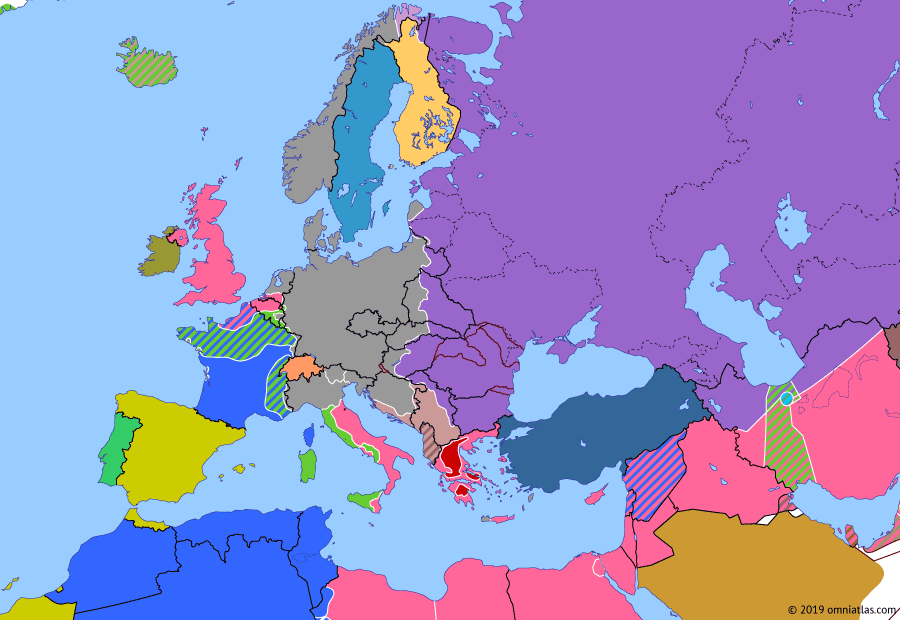Europe 1944: Liberation of the Balkans
24 December 1944
24 Dec 1944
World War II: Fall of the Third Reich
-27–68 Julio-Claudian Dynasty
68–96 Flavian Dynasty
96–192 Nerva–Antonine Dynasty
192–235 Severan Dynasty
235–268 Crisis of the Third Century: Turmoil
268–284 Crisis of the Third Century: Restoration
284–311 Diocletian and the Tetrarchy
311–363 Constantinian Dynasty
363–383 Valentinianic Dynasty
383–408 Theodosian Dynasty: Divided Empire
408–425 Theodosian Dynasty: The West Besieged
425–441 Theodosian Dynasty: Fall of Africa
441–457 Theodosian Dynasty: Hunnic Wars
457–1803 NO MAPS FOR THIS PERIOD YET
1803–1814 Napoleonic Wars
1814–1815 Vienna and Waterloo
1815–1848 Congress Europe
1848–1850 Springtime of Peoples
1850–1859 Crimean War
1859–1862 Italian Unification
1862–1871 German Unification
1871–1914 Imperial Europe
1914–1918 Great War
1918–1922 Armistice Europe
1922–1939 Rise of Fascism
1939–1942 World War II: Blitzkrieg
1942–1945 World War II: Fall of the Third Reich
1945–1990 Cold War
1990–2010 Post-Cold War Europe
2010–pres Crisis of Europe
Liberation of the Balkans
8 Nov 1942 El Alamein and Operation Torch
22 Nov 1942 Battle of Stalingrad
29 Dec 1942 Failure of Winter Storm
22 Feb 1943 Tunisia Campaign
19 Mar 1943 Aftermath of Stalingrad
12 Jul 1943 Kursk and Sicily
30 Sep 1943 Fall of Mussolini
29 Jan 1944 Soviet Breakthrough
20 Jun 1944 Normandy Landings
30 Aug 1944 Liberation of France
17 Oct 1944 Advance on the Rhine
24 Dec 1944 Liberation of the Balkans
24 Mar 1945 Invasion of Germany
2 May 1945 Fall of Berlin
14 May 1945 German Surrender
13 Jul 1945 Division of Germany and Austria
The Allied push through Belgium was stalled by an unexpected German counterattack through the Ardennes in December 1944, however the Soviet offensive continued into Hungary. In the Balkans, where insurgencies had been causing the Germans problems since their initial invasion, Yugoslav Partisans and Soviet troops liberated Belgrade, forcing Hitler to evacuate Greece and Albania.
